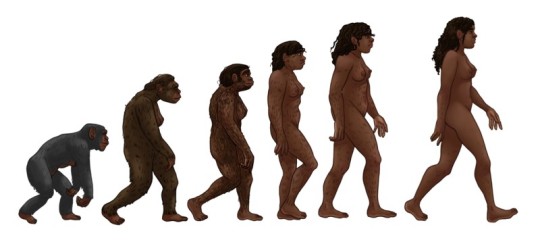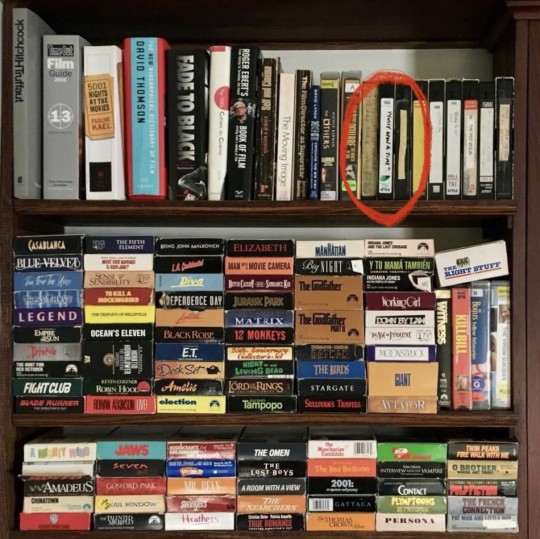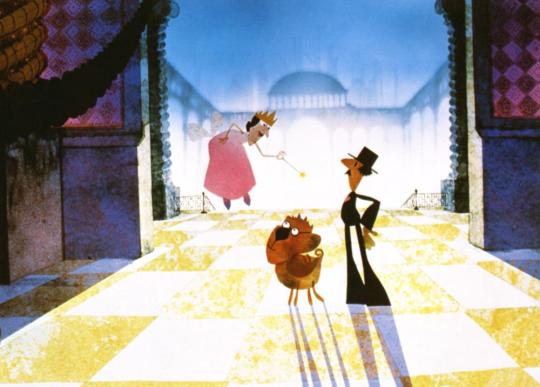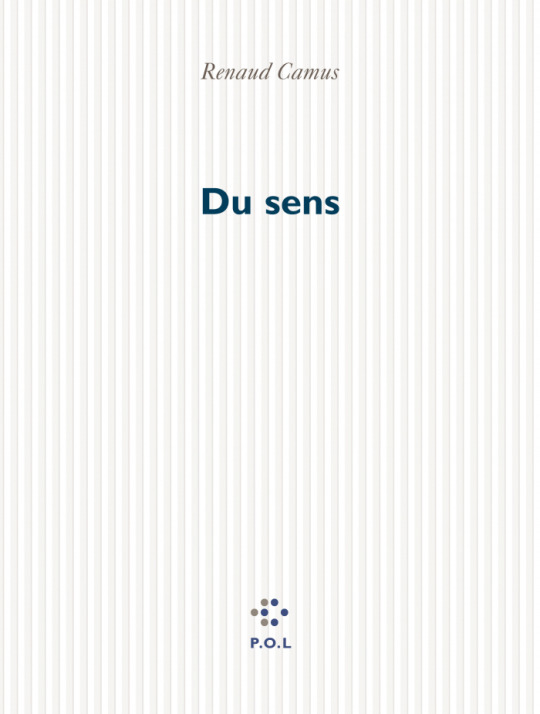#Cratyle
Explore tagged Tumblr posts
Text
Le saut qui sauve
“Saut” ©Philippe Quéau (Art Κέω) 2025 On s’accorde en général à dire que le mot « philosophe » signifie originairement « qui aime la sagesse », du grec philos, « qui aime » et sophia, « sagesse ». D’après les dictionnaires étymologiques, le mot sophia a pour racine (indo-européenne) SAP-, « le goût ». Cette racine a donné en français les mots sapide, insipide, saveur, sapience et sagesse. Le…

View On WordPress
0 notes
Text
Theta waves are produced during stage 1 of sleep, which is when we are closest to wakefulness, and we only go into it during the cycle one, right as we are falling asleep. So, we spend the least time in stage 1 sleep.
Ergo, Theta Sigma/the doctor barely sleeps and sleeps badly. In this essay I will-
#CRATYLIC NAMES HELLOOOOOO#Im back on my bullsjit#theta sigma#doctor who#the doctor#theta waves#sleep cycle
9 notes
·
View notes
Text

Éternelle actualité de Platon (extrait du Cratyle): «On ne louerait pas le courage s'il n'était pas le courant contraire à celui qui va contre le juste»…
«Il est clair que l’injustice (adikia) est essentiellement l'obstacle à ce qui parcourt (tou diaîontos); d'autre part le mot courage indique que c'est dans la lutte que le courage reçoit son nom.
Or dans le réel, si vraiment il s'écoule, la lutte n'est autre chose que le courant (rhoê) contraire.
Si donc on ôte le d à andréïa (courage), par lui-même le nom à'anrêïa indique cette activité.
Il est clair que le courage n'est pas le courant contraire à n'importe quel courant, mais à celui qui va contre le juste; autrement on ne louerait pas le courage.
[Littéralement: car on ne louerait pas le courage (sous-entendu: s'il n'était pas le courant contraire à celui qui va contre le juste)].»
3 notes
·
View notes
Photo

Autant il n'y aurait pas de traduction possible si Saussure avait tort, autant il n'y aurait pas de poésie possible si Cratyle avait tort. La diction doit être poétique, c'est-à-dire qu'elle doit rappeler la saveur, le goût, du non-arbitraire possible des mots.
- Renaud Camus
14 notes
·
View notes
Text
10 juin 22 | Borges, Burton, Macquet | 9
10 juin 22 | Borges, Burton, Macquet | 9
489. En 2017, C. Macquet publie aux éditions Kâla (Cambodge) sa traduction de la nouvelle « L’Aleph », de Jorge Luis Borges. Traduction « classique » de l’espagnol d’Argentine vers le khmer du Cambodge, et non “traduction” identifiée dans LW et DLW, procédant par dérivation-expansion). Cette publication joue un rôle essentiel dans la compréhension du geste poétique de ce traducteur-auteur. En…

View On WordPress
#aleph#Borges#Cratyle#Dante#Derrida#Dichtung#dissémination#Hamlet#Hang Achariya#Hobbes#Kabbale#khmer#Khun Srun#métaphore et métonymie#Platon#Soth Polin#traduire#Verdichtung
1 note
·
View note
Text
Travailleurs de deuxième ligne, prolétaires de seconde classe ? La reconnaissance du Vide
Travailleurs de deuxième ligne, prolétaires de seconde classe ? La reconnaissance du Vide #Philosophie #Travail #Société #Politique#Vide #LaoTseu #Arendt #Aristote #Bergson #Descartes #Épicure #Marx #Nietzsche #Parménide #Platon #SaintExupéry #ASH #Atsem
Écrits, nouvelles et contes philosophiques (ou pas) “The female human evolution” – Source : Wikimedia Ainsi, l’être produit l’utile ; mais c’est le non-être qui le rend efficace. Lao Tseu, Tao Te King, § 11. Les temps modernes Dans les adaptations cinématographiques ou télévisées du roman de H. G. Wells, le moment le plus attendu en matière de sensations et de frissons était celui où le…

View On WordPress
#Acronyme#Animal laborans#ash#Atome#Atsem#Autre#Autrui#Éboueur#Éducation#État#Évidement#Être#Caissière#Capitalisme#Cogito#Conscience#Cratyle#Création#Culture#Dieu#Efficacité#Esclave#Esprit#Essence#Evolution#Existence#Expérience#Fonction publique#Genèse#Guerre
0 notes
Quote
Tout passe et rien ne demeure
Héraclite - Cité par Platon (Cratyle)
17 notes
·
View notes
Text
JUNK FOOD: Twice Upon a Time

Before my mother preempted the trend to ‘pull the plug’ on the channels on our set, I lived, laughed, and loved in front of the aging tube TV. But I loved it at a specific cultural moment that cannot be recreated: when Bravo showed operas. And ballets. And films. The TV programming landscape was confined to fewer channels, but the offerings were undeniably broader.
The internet’s looming ubiquity had not fully registered, let alone to a 14-year-old girl in central New York state. Had I known that I’d be spending the next 20 years using the internet to stream videos and shows I might not have been so insistent on TAPING MOVIES OFF TV. Even as I type those words I wonder if they’ve been divorced from meaning; outmoded signifiers that have not made the semiotic leap like the floppy disk SAVE icon, or ‘hanging up’ a touchscreen cell phone. Yes, little children, gather ‘round, for I am from a time when ‘content’ was what was available, rather than a revenue stream that can buy you prankster teen roommates in a shared house in the Hollywood hills. To further place myself in/out of time, I still have the movies that I taped on decaying VHS cassettes. They line my bookshelves like Beefeater guards, steadfast and anachronistic. A friend – my age, but savvier – transferred some of the tapes onto a hard drive, capturing the cassette ribbon’s information in an accessible format before the inevitable day comes when my tapes truly become albatrosses. (I’m not there yet; I have a VCR that will work if I coax it as its gears churn and whir.) And, like so many of us this past year, I’ve been spending literally all my time at home where I’m surrounded by the dust-gathering cassettes that remind and admonish me that time does take a toll. So I watched one.

From 1998 to 2008 Cartoon Network ran ‘Cartoon Theater’ on Saturday nights, showing an animated feature with commercials at regular intervals. Most of the movies were miss-able—how many Scooby-Doo, Flintstones, and Land Before Time movies did the world actually need?—but there were gems amongst the garbage. “Twice Upon a Time” intrigued me from the start and I made sure the VCR was cued. Even watching it in 1999 I could tell it was, well, somewhere out of time. Construction paper characters and manipulated live-action footage were slammed together to create something I’d never seen before, and haven’t really since. The 1983 movie is incredible, written and directed by John Korty and Charles Swenson, and helmed by executive producer George Lucas, though it’s practically unheard of today. The stock characters each bear a cratylic name that both describes, and subverts his stock role: Ralph the All-Purpose Animal, Rod Rescueman, Synonamess Botch, the dream-distributing Figmen of Imagination. The story and style toe the line of what is appropriate in a balancing act similar to “Shrek,” which would come out in 2001, two years after the Cartoon Network broadcast. But in the 20+ years since I insisted on taping the then-16-year-old movie I have realized how abstract, and yet completely relevant this tiny slice of not-so-popular culture has proven. If you can find it, you should watch it.
Re-watching my copy, though, turned out to be less an exercise in nostalgia, than retrospective trend forecasting. For, you see, we taped the commercials, too. “Spice World” had just been released for Playstation, Hooked on Phonics’ tagline was already a joke amongst kids, and there were multiple ads for different wildlife videos. Like, “Wacky Babies, with Marty Stouffer” which was a physical VHS tape you could purchase by telephoning a number that flashed across the screen. There were bear cubs in trees, and fox kits on the prairie, and cheetah kittens yawning, all underscored with timpani punctuation and slide-whistle oopsy-daisies. Youtube’s first kitten video wouldn’t come until 2005, and ‘viral’ animal videos weren’t something to aspire to until the following year. But at 8:00pm on a Saturday in 1999, Cartoon Network sold 30 seconds of ad space to a video-hawking naturalist.

Watching the commercial now, in 2021, on my computer, made me feel so out of space, and time, that I had to pause to collect my thoughts after the commercial break. I had pressed PLAY for some nostalgic fun but was instead doing mental backflips to understand what I was watching within the broader cultural landscape of the past 20 years. I hadn’t considered that our VCR was recording an inflection point, but it feels that way; a movie already out-of-time, and commercials for the progenitors of internet culture. And to appreciate that moment with the blessing/curse of 20 years’ hindsight is complicated, and bittersweet. But nostalgia cuts both ways: we miss the things we loved, and love the things we’ve missed. I have missed this movie because I love it, but I love the things our culture has forgotten to miss – the foundations of meme and internet culture were laid in the Saturday night, primetime slot. I can only hope that when I watch the tape again 20 years from now, ‘before it was a thing’ is still a thing.
1 note
·
View note
Quote
Παντα χωρεῖ καὶ οὐδεν µένει Tout change et rien ne reste immobile.
Platon, Cratyle
6 notes
·
View notes
Text
Le Dieu ‘Qui que tu sois ‘. Ou : Celui qui chemine ‘sans bruit’
Le Dieu ‘Qui que tu sois ‘. Ou : Celui qui chemine ‘sans bruit’
En l’an 458 av. J.-C., lors des Grandes Dionysies d’Athènes, Eschyle a fait dire au Chœur des Anciens, dans le commencement de son Agamemnon:
« ‘Zeus’, quel qu’il soit,
si ce nom lui agrée,
je l’invoquerai ainsi.
Tout bien considéré,
il n’y a que ‘Dieu seul’ (πλὴν Διός)i
qui puisse vraiment me soulager
du poids de mes vaines pensées.
Celui qui fut grand jadis,
débordant d’audace et prêt…
View On WordPress
#Agamemnon#Bailly#Chantraine#Connaissance#Cratyle#Eclipse#Eschyle#Euripide#Hécube#προφρόνως#φρήν#φρενῶν#φρονεῖν#μάθος#Léon Robin#Liddell-Scott#Martin Buber#Onians#Platon#sagesse#Troyennes#Zeus
0 notes
Text
FIN DE L’ABONDANCE
BOND DE LA FINANCE
Certains ont repéré l’anagramme.
Voici ce que disait Lacan des "histoires d’anagrammes": «Mais n’oublions pas qu’au départ si l’on s’est attaché - et tellement - à l’élément signifiant, au phonème, c’était pour bien marquer que cette distance, qu’on a à tort qualifiée de fondement de l’arbitraire, c’est comme s’exprime - probablement contre son coeur - Saussure. Il avait affaire - comme ça arrive n’est-ce pas ? [sic] - à des imbéciles, il pensait bien autre chose, bien plus près du texte du Cratyle quand on voit ce qu’il a dans ses tiroirs: des histoires d’anagrammes. Ce qui passe pour de l’arbitraire c’est que les effets de signifié, eux, sont bien plus difficiles à soupeser, c’est vrai qu’ils ont l’air de n’avoir rien à faire avec ce qui les cause. Mais s’ils n’ont rien à faire avec ce qui les cause c’est parce qu’on s’attend à ce que ce qui les cause ait un certain rapport avec du réel. Je parle: avec du réel sérieux. Ce qu’on appelle du réel sérieux, il faut bien sûr en mettre un coup pour l’approcher, pour s’apercevoir que le sérieux ça ne peut être que le sériel, il faut un peu avoir suivi mes séminaires… (Jacques Lacan)
2 notes
·
View notes
Text

Du sens
Renaud Camus
La question qu’ouvre ce livre ramène nécessairement à l’inépuisable dialogue entre Cratyle et Hermogène, chez Platon. Cratyle s’attachant au sens des mots, tel qu’il a été d’après lui défini une fois pour toutes (ainsi dirait-on toujours, aujourd’hui, que « formidable » ne devra jamais dire qu’« effrayant », « redoutable », ou que « scabreux » doit définitivement signifier, comme à son origine, « escarpé », « abrupt », « raboteux »). Hermogène, lui, plaide pour la convention, le contrat, l’évolution, le glissement de sens à partir du moment où un accord général se fait. Globalement on peut dire qu’Hermogène a raison, de plus en plus raison, et que Cratyle a tort, de plus en plus grand tort. L’ennui est que Cratyle n’a pas tout à fait tort, d’une part, et que son tort, qui pis est, se révèle souvent plus séduisant, plus riche, plus littéraire que la raison d’Hermogène – de sorte qu’on n’échappe guère à la tension maintenue, entre les positions de l’un et de l’autre ; ni n’arrive-t-on seulement à le souhaiter vraiment. Indéfiniment vibrante, la corde tendue par leur échange définit un grand arc où n’a pas de mal à se loger une discussion détaillée, point par point, ligne à ligne, de ce qui fut en son temps « l’affaire Renaud Camus ».
0 notes
Photo

The Hebrew verb, ‘nūac͡h’ means ‘to rest.’ According to the Schofield reference bible, a favorite amongst dispensationalist Independent Fundamentalist Baptists, this is where we get the proper noun: ‘nôac͡h,’ or: ‘Noah’ from. Here, in Genesis 8:4, we observe an instance of the verb: ‘nūac͡h’ with Noah’s Ark coming to rest: ‘n͡ɡal hārī́y ărārā́t,‘ or: ’on the mountains of Ararat.’ A criticism that critics level at the Bible is its overuse of Cratylic names, which they consider a Hallmark of fiction. In the Bible, there are lots of people, like Noah, whose name signifies their role in the story. Even ‘Jesus,’ in Hebrew means: ‘Yahweh saveth [in battle].’ The old testament Jesus, or Joshua, relied on Yahweh to save the Israelites in battle against the Cana’anites. Messiah was prophesied to save Israel in battle by kicking out their occupiers, the Assyrians. Not only did the New Testament Joshua, or Jesus Christ, not kick out any of the occupiers of Israel, He was actually judicially executed by the occupying power, the Romans. Jesus Christ, having failed to win any real earthly battles here on Earth, ‘Yahweh saveth’ was spiritualized, by the early Christian Church to mean: ‘Yahweh saveth [thee from thy sins].’ Thus the failure of Jesus Christ’s earthly Messianism was transmuted into an invisible "spiritual victory" over: ‘death, Hell and the grave.’ An angel, in the New Testament, promises Jesus Christ the earthly Davidic Kingdom. This never came to pass. A false promise by the heavenly messenger. But, hey presto, the early Church turned Jesus Christ into the invisible king of an invisible Heaven. The deist theologian, Herman Samuel Reimarus, (1694-1768) documents this in his ‘Fragments.’ https://www.instagram.com/p/CGn0zO7HADs/?igshid=11ll2hyeheqc9
0 notes
Quote
Tu ne saurais entrer deux fois dans le même fleuve
Héraclite - Cité par Platon (Cratyle)
2 notes
·
View notes
Photo

What is a cratylic name? A cratylic name is a name given to a character to express a trait they may have. Priestly uses this concept when creating two characters: ‘Eva Smith’ and ‘Daisy Renton.’ When analysing the proper noun ‘Eva Smith’, the audience understand that the surname ‘Smith’ was the common name within the lower classes- especially in women; making Eva the symbol for the lower classes. The members of the audience will see Eva Smith’s throughout the play: in the prostitutes at the Palace Bar Theatre, in the women working for Mr Birling and in the the young women who were unjustly fired. Ultimately, this explains the consequences of the actions and objectifying behaviour of the bourgeoisie. To add to this, the name ‘Eva Smith’ also has a biblical reference. The name ‘Eva’ reminds us of the name ‘Eve’. In the Book of Genesis, when Adam and Eve are questioned by God for eating the forbidden fruit, Adam pointed the finger at Eve, indicating that he held her responsible. This is relevant because throughout the play, Eva is blamed by the chauvinistic males who constantly blamed her for their own faults. Furthermore, the pseudonym ‘Daisy Renton’ also has a negative meaning. The name ‘Daisy’ has connotations of purity and death yet it also insinuates the death of innocence. In addition tho this, the last name ‘Renton’ sounds like ‘rent’, which sounds like something being torn, linking to the idea of The lower classes being taken advantage by the middle and upper classes. Can you think of any cratylic names? #aninspectorcalls #evasmith #GCSERevision #gcseenglish #gcsenglishlit #gcseenglishtutors #loveenglish #cratylicnames #jbpriestley #theatreplay #biblicalreferences #bourgeoisie #20thcenturywomen #20thcenturyliterature https://www.instagram.com/p/CDE9saTlF7p/?igshid=18hazjc7gk8rz
#aninspectorcalls#evasmith#gcserevision#gcseenglish#gcsenglishlit#gcseenglishtutors#loveenglish#cratylicnames#jbpriestley#theatreplay#biblicalreferences#bourgeoisie#20thcenturywomen#20thcenturyliterature
0 notes
Text
Journal de Séoul - 22 janvier 2018 (3)
Journal de Séoul – 22 janvier 2018 (3)
« Ce qui caractérise Cratyle, comme toute chose au monde, est donc sa singularité, son unicité. Cette structure fondamentale du réel, l’unicité, désigne à la fois sa valeur et sa finitude : toute chose a le privilège de n’être qu’une, ce qui la favorise infiniment, et l’inconvénient d’être irremplaçable, ce qui la dévalorise infiniment. » (Clément Rosset, Le réel et son double, p.55)
Retour…
View On WordPress
0 notes